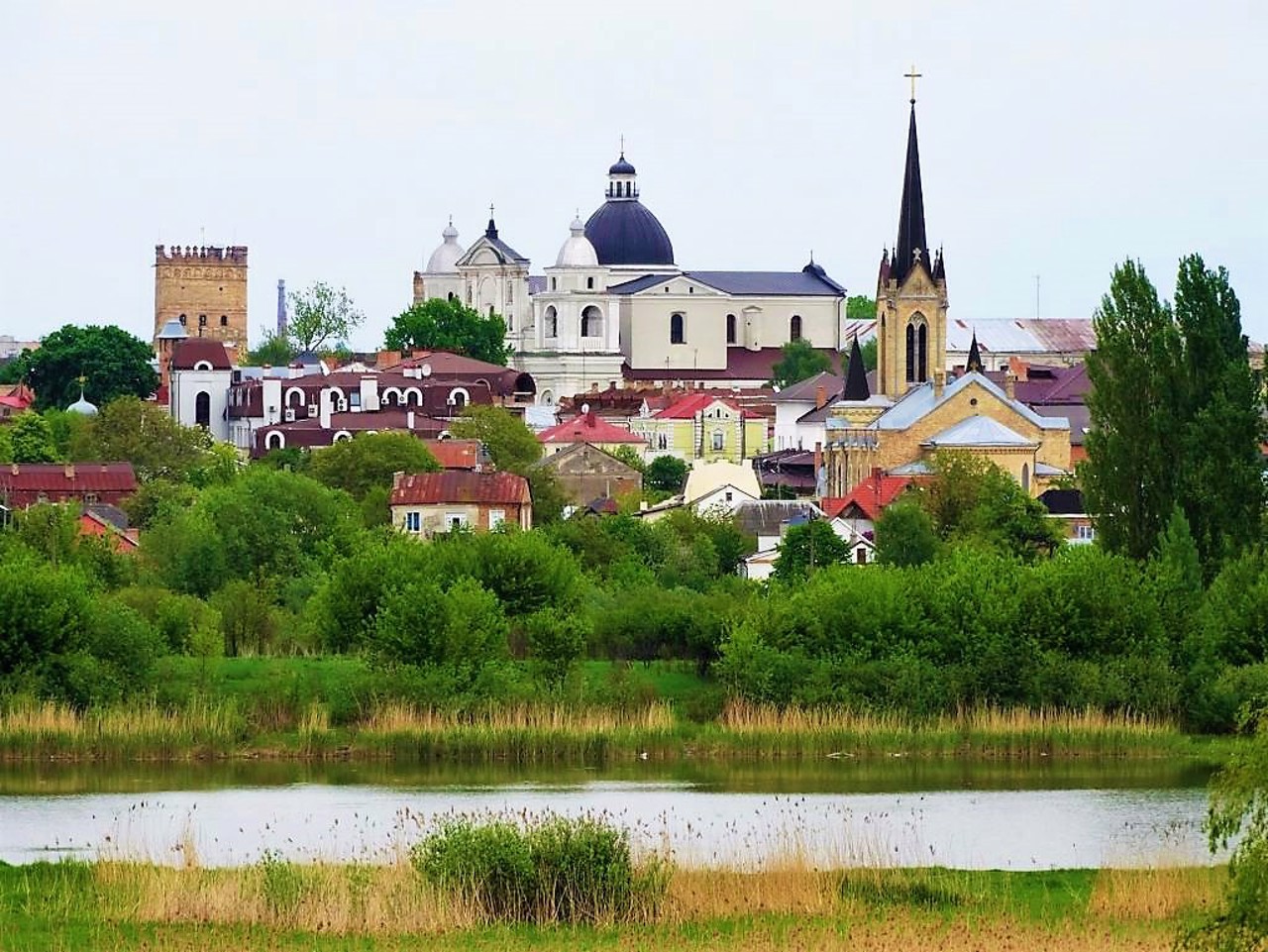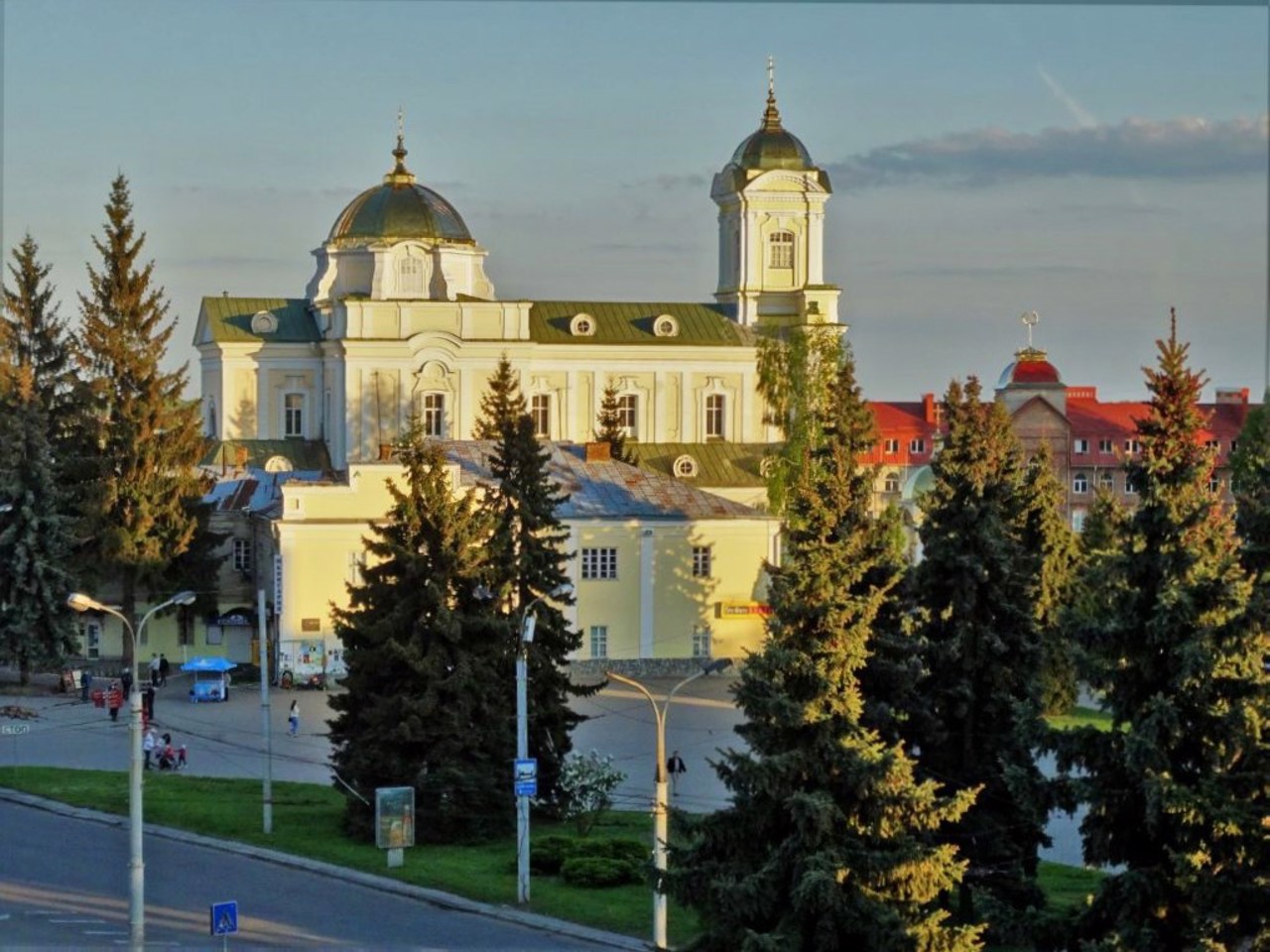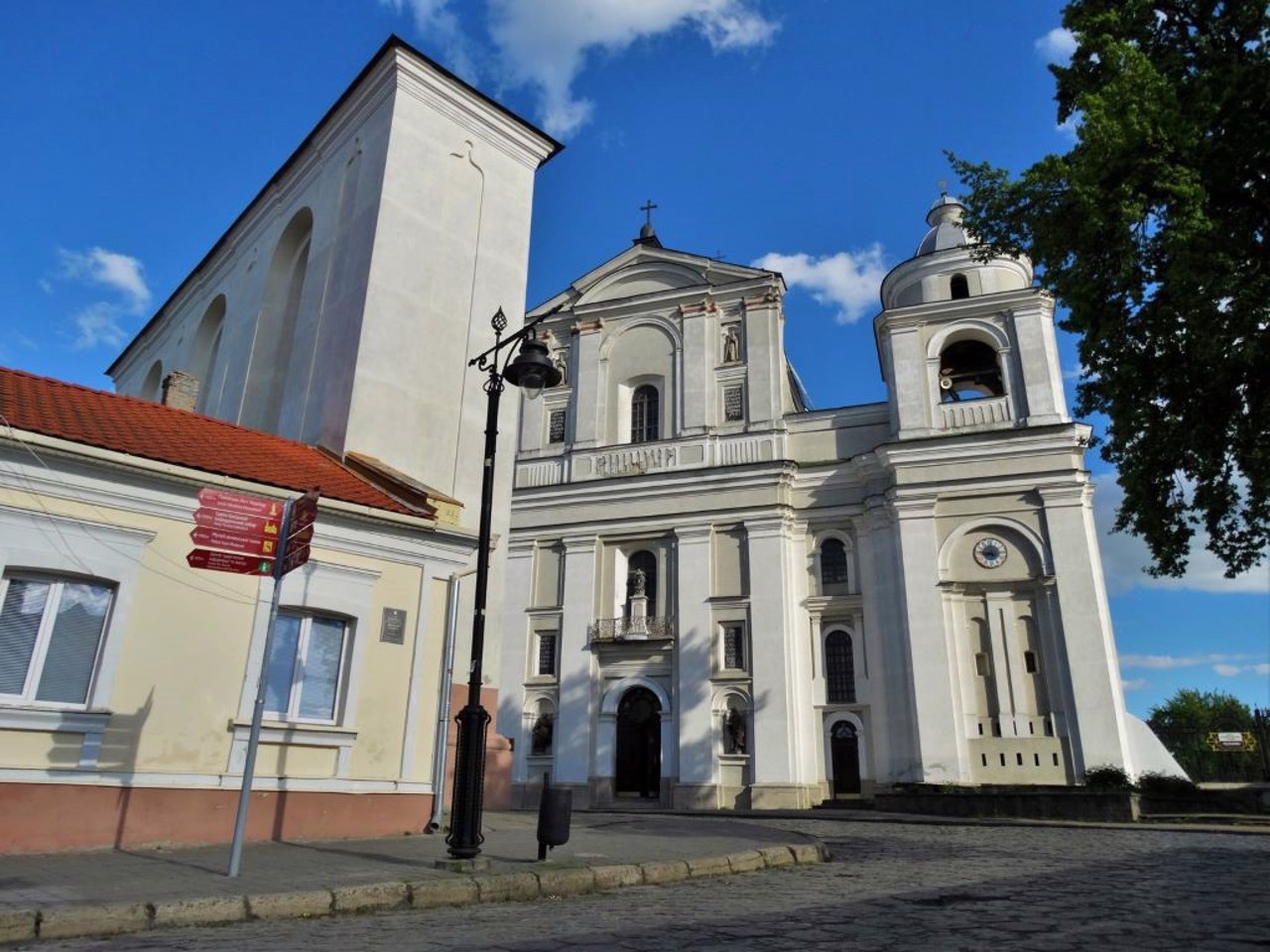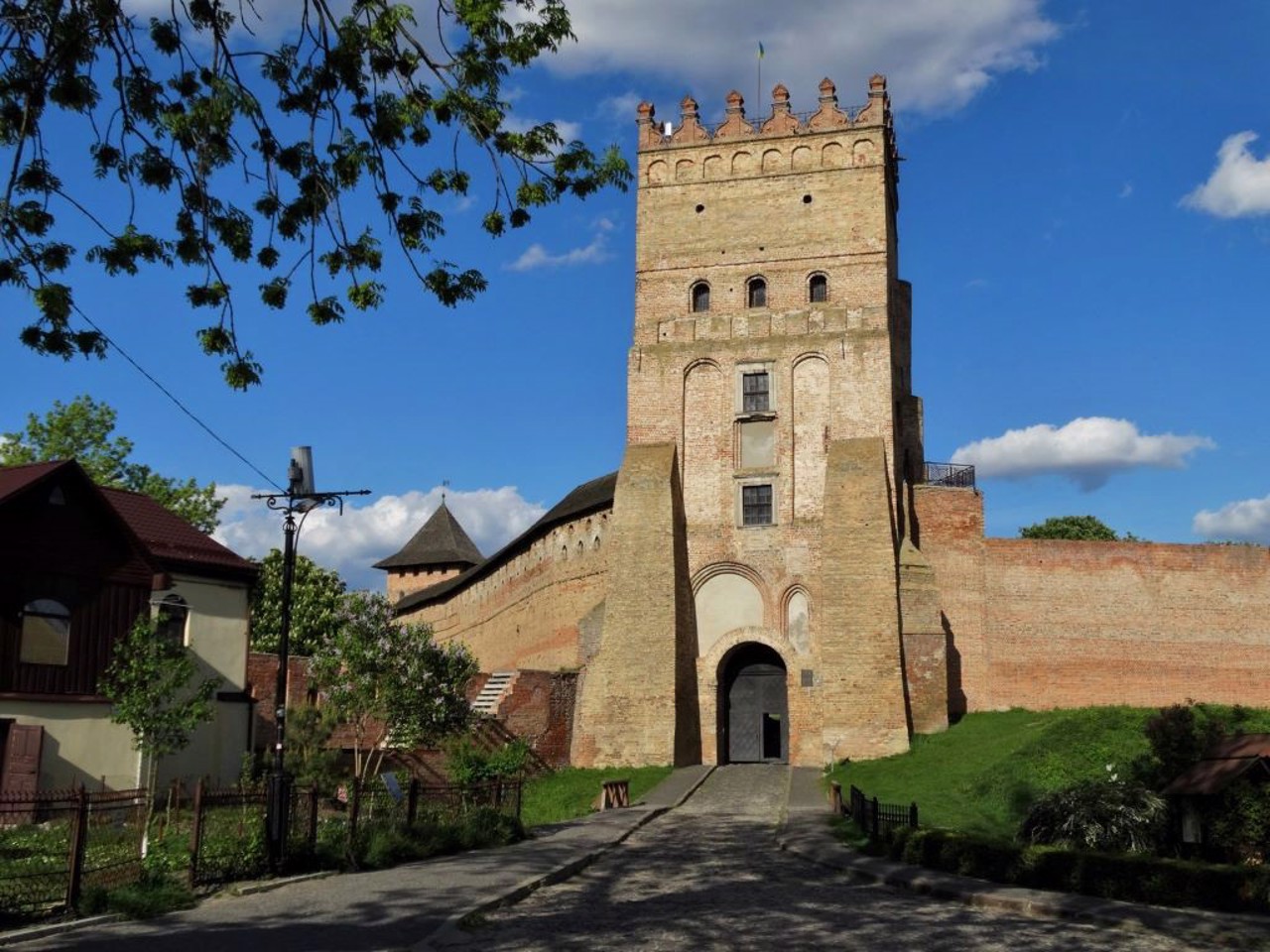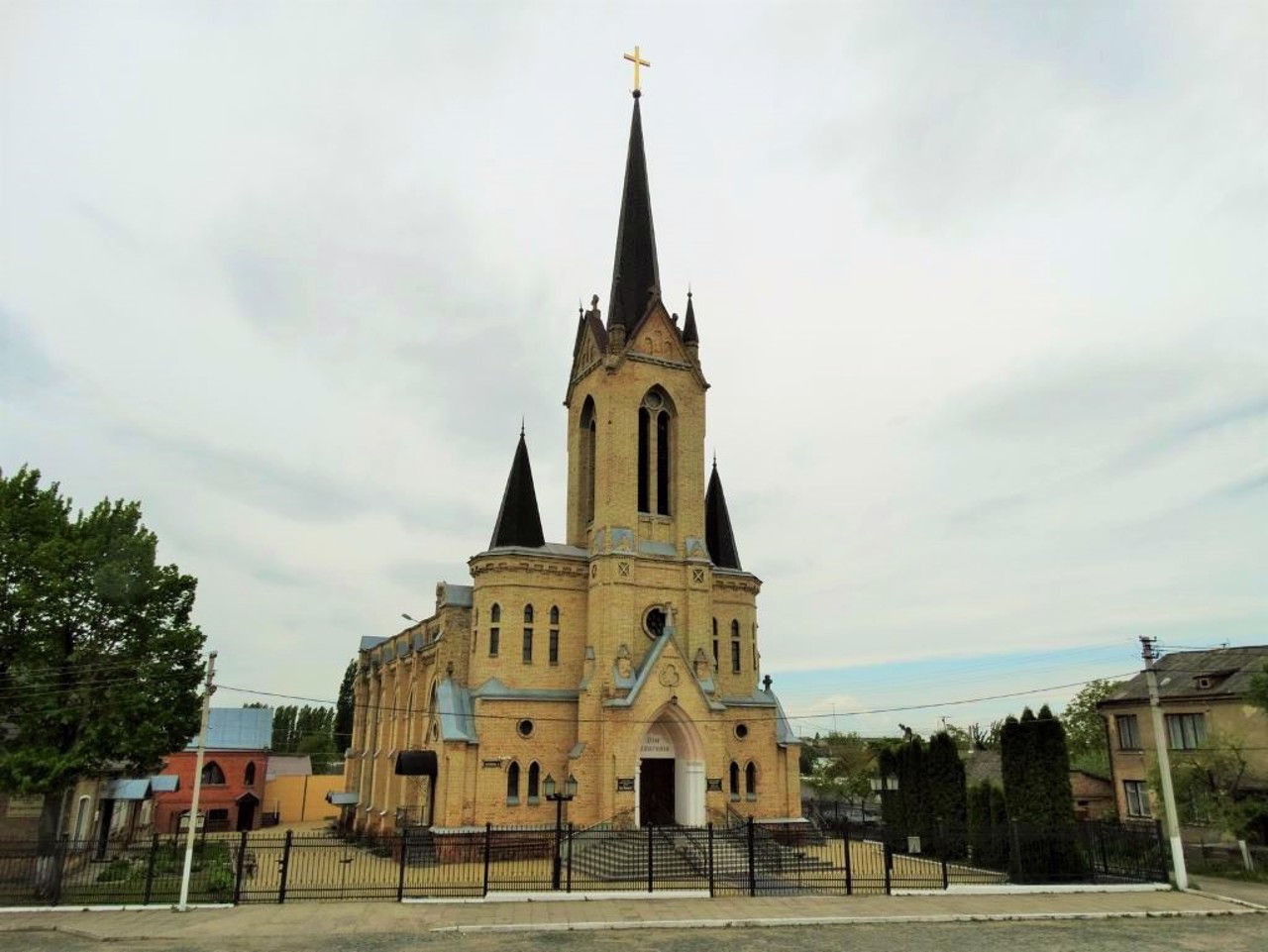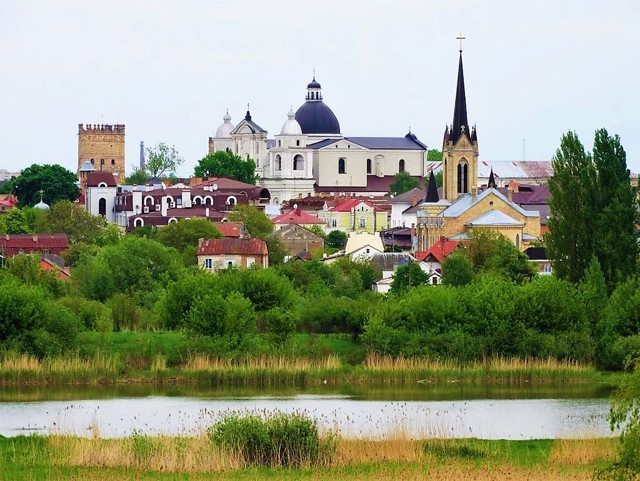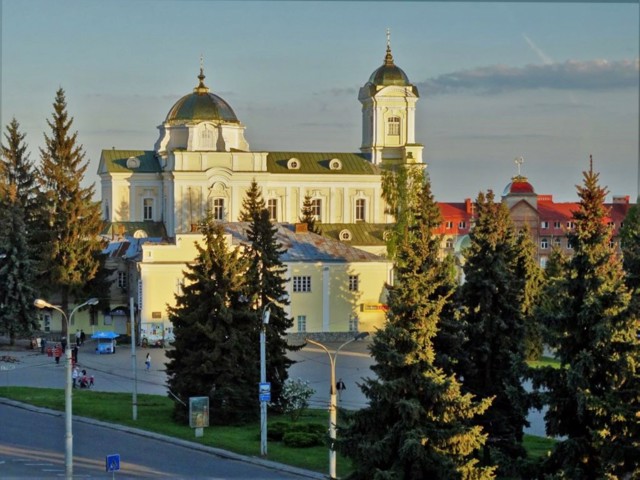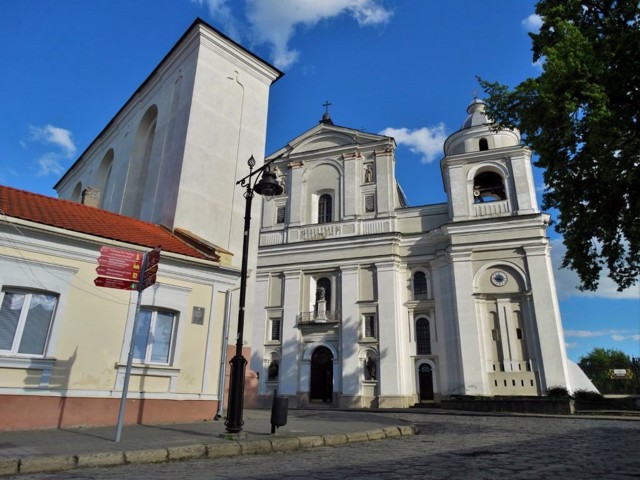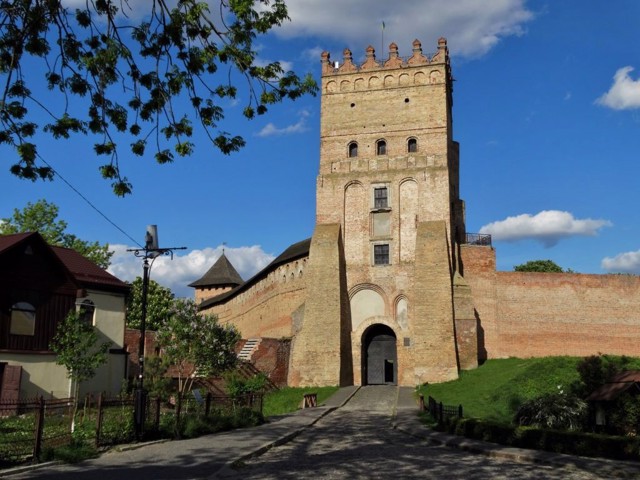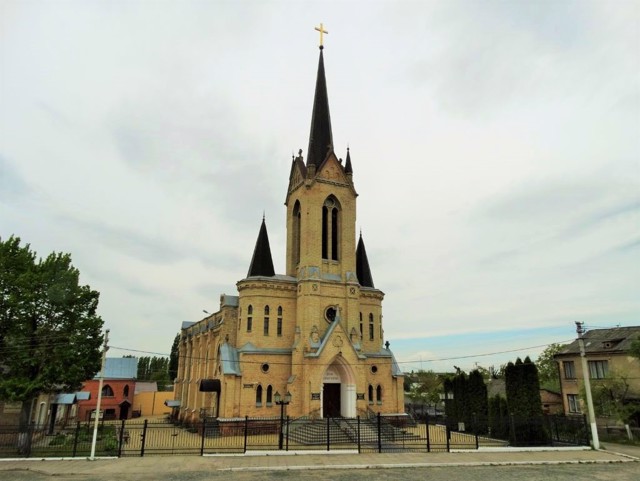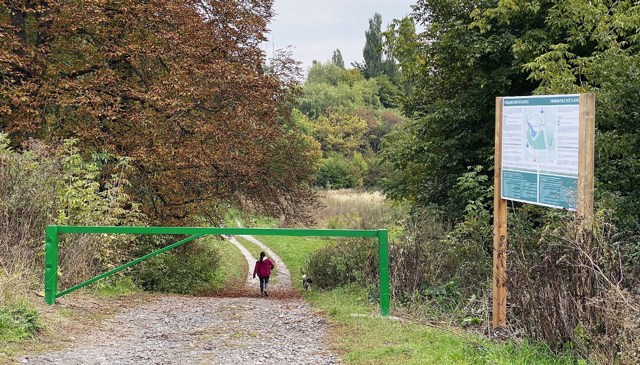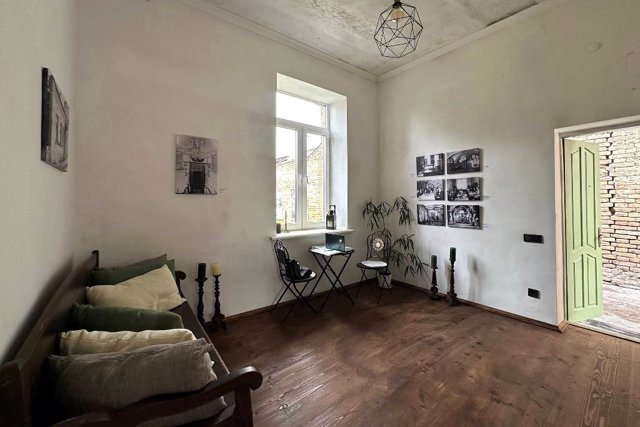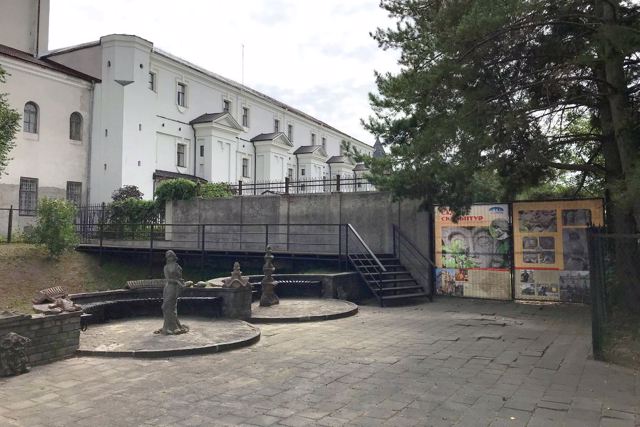Functional temporarily unavailable
General information about Lutsk
The city Lutsk is the regional center on the Styr River, the ancient capital of Volyn. According to various versions, the name comes from the word "bow", that is, the bend of the river, or from the name of the leader of the East Slavic Dulib tribe Luka, who founded the settlement.
It was first mentioned as the city of Luchesk in the Ipatiev Chronicle in the description of the events of 1085, when Prince Volodymyr Monomakh took possession of the city, establishing it as the center of a separate principality of Kyivan Rus. After becoming a part of the Rus-Lithuanian state in 1320, "Luchesk Velikiy na Styr" (as it is mentioned in the "List of Rus Towns") actually became the second capital of Lithuania. Prince Lubart, who built a stone castle, contributed ...
The city Lutsk is the regional center on the Styr River, the ancient capital of Volyn. According to various versions, the name comes from the word "bow", that is, the bend of the river, or from the name of the leader of the East Slavic Dulib tribe Luka, who founded the settlement.
It was first mentioned as the city of Luchesk in the Ipatiev Chronicle in the description of the events of 1085, when Prince Volodymyr Monomakh took possession of the city, establishing it as the center of a separate principality of Kyivan Rus. After becoming a part of the Rus-Lithuanian state in 1320, "Luchesk Velikiy na Styr" (as it is mentioned in the "List of Rus Towns") actually became the second capital of Lithuania. Prince Lubart, who built a stone castle, contributed to its development. In 1429, during the reign of the Lithuanian king Vytautas, a congress of the largest monarchs of Europe took place in Lutsk in connection with the threat from Turkey. The city owes numerous religious architectural monuments to the period of Polish rule in the 16th and 17th centuries.
After the Liberation War and the city's incorporation into Russia, a period of decline began, intensified by two world wars. However, all these years, Lutsk remained a significant cultural center and a center of Ukrainian national self-awareness. Poet Lesya Ukrainka spent her childhood here. The building of the historical center has been well preserved and is being continuously restored.
Lutsk City Day is celebrated on August 23.
Місто Луцьк - обласний центр на річці Стир, стародавня столиця Волині. Згідно з різними версіями, назва походить від слова "лук", тобто вигин річки, або від імені вождя східнослов'янського племені дулібів Луки, який заснував поселення.
Вперше згадується як місто Лучеськ в Іпатіївському літописі в описі подій 1085 року, коли містом заволодів князь Володимир Мономах, затвердивши його центром удільного князівства Київської Русі. Увійшовши в 1320 році до складу русько-литовської держави, "Лучеськ Великий на Стиру" (так він згаданий в "Списку городів руських") фактично став другою столицею Литви. Його розвитку посприяв князь Любарт, який побудував кам'яний замок. У 1429 році, за часів правління литовського короля Вітовта, в Луцьку відбувся з'їз ...
Місто Луцьк - обласний центр на річці Стир, стародавня столиця Волині. Згідно з різними версіями, назва походить від слова "лук", тобто вигин річки, або від імені вождя східнослов'янського племені дулібів Луки, який заснував поселення.
Вперше згадується як місто Лучеськ в Іпатіївському літописі в описі подій 1085 року, коли містом заволодів князь Володимир Мономах, затвердивши його центром удільного князівства Київської Русі. Увійшовши в 1320 році до складу русько-литовської держави, "Лучеськ Великий на Стиру" (так він згаданий в "Списку городів руських") фактично став другою столицею Литви. Його розвитку посприяв князь Любарт, який побудував кам'яний замок. У 1429 році, за часів правління литовського короля Вітовта, в Луцьку відбувся з'їзд найбільших монархів Європи в зв'язку з загрозою з боку Туреччини. Численним релігійним архітектурним пам'яткам місто зобов'язане періоду польського панування XVI-XVII століть.
Після Визвольної війни та входження міста до складу росії почався період занепаду, посилений двома світовими війнами. Однак всі ці роки Луцьк залишався значним культурним центром та осередком української національної самосвідомості. Тут пройшли дитячі роки поетеси Лесі Українки. Забудова історичного центру добре збереглася й послідовно реставрується.
День міста Луцьк відзначає 23 серпня.
Сплануй своє перебування у Lutsk
What to see and where to go in Lutsk
Tourist attractions and museums of Lutsk
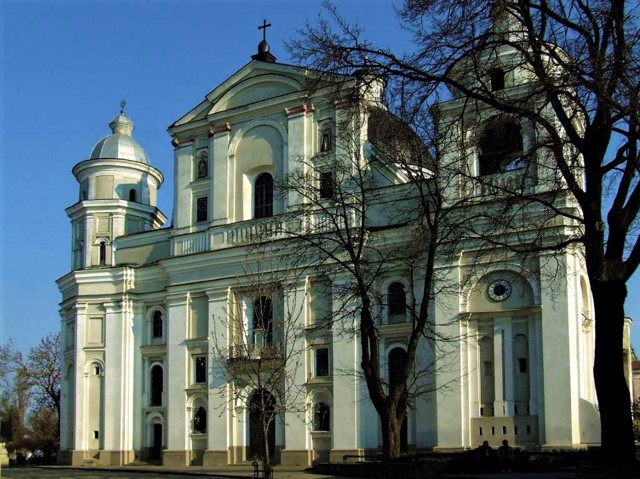
Holy Apostles Peter and Paul Cathedral
Temple , Architecture
The Cathedral of the Holy Apostles Peter and Paul in Lutsk is one of the most valuable architectural monuments of the city, which is one of the most important Catholic shrines in Volyn. It is part of the State Historical and Cultural Reserve in the city of Lutsk.
The Peter and Paul Church was built in the 17th century at the same time as the Jesuit monastery, designed by architects Dzhakomo Briano and Benedetto Molli. The nearby bell tower has been preserved since the 16th century, when the Catholic bishopric was founded in Lutsk and the first Latin cathedral appeared, which has not survived to this day.
The interior is lavishly decorated with moldings, sculptures, pilasters, as well as paintings by many artists: Mykola Klymkovych, Pavlo Vyshynskyi, Tadeush Konych (Kuntse), Yan Prekhtl, Vilyani, Frantsysk Smuhlevych, Voytsekh Herson and others.
In the XVII-XVIII centuries, the largest religious school in Volyn operated at the monastery. Currently, the building of the Jesuit monastery houses a technical school of food technology.
Peter and Paul Church is the cathedral of the Lutsk Diocese of the Roman Catholic Church in Ukraine.
There are three-level dungeons under the building (entrance to the right of the cathedral, tours are available).
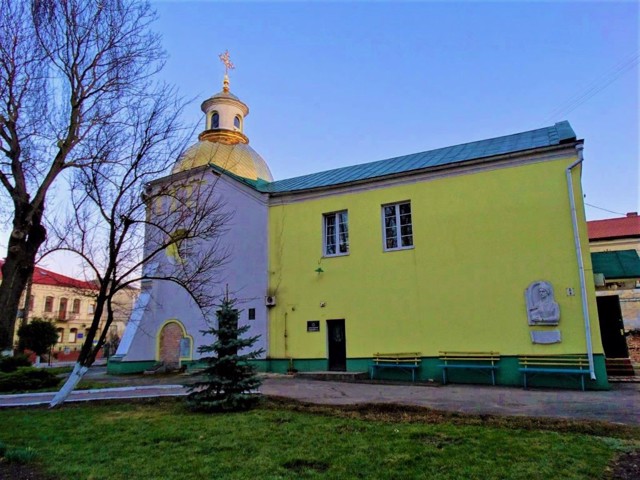
Holy Cross Exaltation Church
Temple , Architecture
The Holy Cross Exaltation Church in Lutsk is one of the most significant Orthodox shrines in Volyn, an architectural monument of national importance. It is located near the northern entrance to the historical center of the city. It is part of the State Historical and Cultural Reserve in the city of Lutsk.
In the 17th century, the Holy Cross Exaltation Church was part of the complex of buildings of the Lutsk Brotherhood of the Holy Cross Exaltation, which included a monastery, a hospital and a school.
The Lutsk brotherhood was founded by a group of Volyn noblemen, among whom was the celebrated Ukrainian patroness Halshka Hulevychivna, the founder of the Kyiv brotherhood. The Holy Cross Exaltation Church, built on a donation by a patron, has a pronounced defensive character. In its current form, the temple was rebuilt after the fire of 1888.
Crypts were preserved under the altar of the church, in which brothers, famous noblemen, public, cultural and state figures were buried. Danylo Bratkovskyi, Halshka Hulevychivna, and Lavrentiy Drevinskyi are buried here.
The dungeons of the Holy Cross Exaltation Church are open to visitors. A museum of the history of the Lutsk brotherhood has been opened in the premises of the monastery.
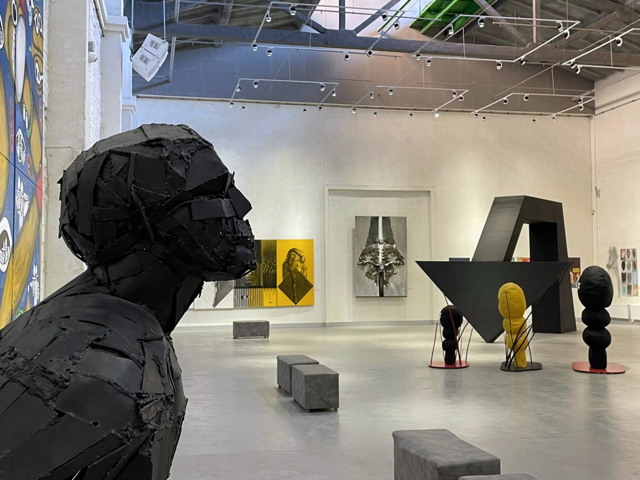
Korsaks Museum of Modern Ukrainian Art
Museum / gallery
The Korsaks Museum of Ukrainian Modern Art (KMUMA) was opened in 2018 by Volyn businessman and philanthropist Viktor Korsak.
The 3,000-square-meter museum exposition is located on three floors of the Adrenaline City Cultural and Entertainment Center on the northeastern outskirts of Lutsk.
It is the largest museum of contemporary national art in Ukraine, which presents paintings, graphics, sculptures, video art, installations and other works by more than 100 leading Ukrainian artists from the early twentieth century to the present. In total, more than 800 art objects are presented in several exhibition halls.
The pearl of the collection is the early work of the founder of cubism in sculpture, the world-famous Ukrainian sculptor Oleksandr Arkhypenko "Naked" (1907), which became the prototype of many future works of the artist. The museum is also proud of the works of the luminaries of Lviv modernism: Olena Kulchytska, Roman Selsky, Leopold Levytsky and Yaroslava Muzyka.
Nonconformism of the Soviet times is represented by three schools: north-western - Lviv, Transcarpathia; central and eastern - Kyiv, Kharkiv; southern - Odesa. In particular, the works of Mykola Malyshko, Petro Honchar and others are exhibited. Postmodernism is represented by the works of Vlodko Kaufman, Yuriy Izdryk, Petro Bevza, Petro Antyp and others.
The structural subdivision of KMUMA is the Mykola Kumanovsky Art Memorial Museum, where the artist's memorial items are presented: etching machine, brushes, spatula, old easel, on which is his last unfinished canvas.
The museum also has a variable exposition, which presents the work of the best domestic and foreign artists. Nearby is the street gallery "Polychrome A", which is a platform for the development of modern urban art.
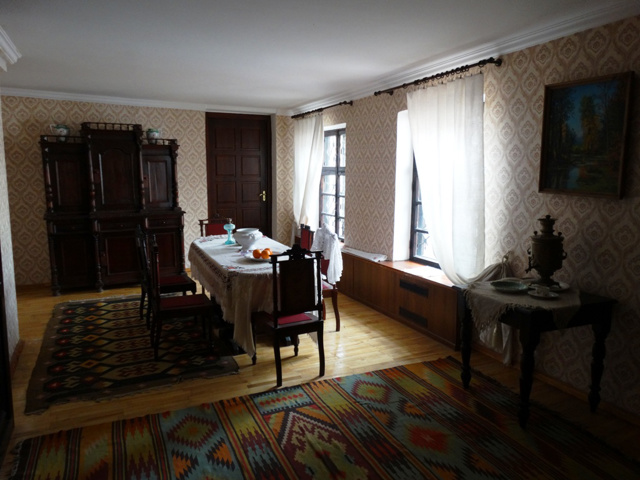
Lesya's Living Room Museum (Kosachs House)
Architecture , Museum / gallery
The Lesya's Living Room Museum is located in a late 18th-century house in the center of Lutsk, on the corner of Drahomanova and Kafedralna streets, next to Lubart's Castle, where the Kosach literary family lived in 1890-1891.
This was the last period of Lesya Ukrainka's stay in the city, who was already seriously ill at that time. The office apartment of Petro Kosach (Lesya's father) was located on the second floor, and in the western wing of the building is the office of the county peace mediator - at that time this position was held by Petro Kosach.
In 2007, the Lesya Living Room Museum was opened in the Kosach house. The exhibition is located in the hallway and two rooms on the second floor. The interior of the home of the then noble family is recreated in the room.
You can enter the museum by prior arrangement with the administration of the State Historical and Cultural Reserve in the city of Lutsk, which is located in the same building.
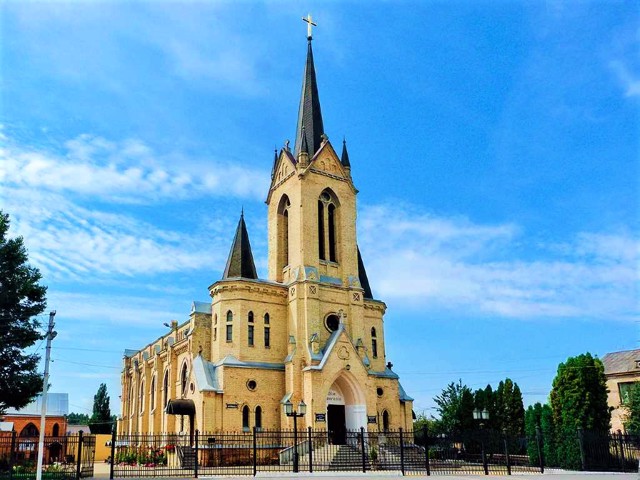
Lutheran Church
Temple , Architecture
The Lutheran Church was built on the site of a burned Carmelite church in 1905-1907 as a Protestant church for German colonists who moved to Lutsk at the end of the 19th century.
The church was built in the neo-Gothic style by the architect Khrystyan Boytelspakher at the expense of the German community.
After the Second World War, the damaged church was rebuilt for the needs of the city archive.
In 1991, the restoration began, and since 1994, the Baptist church "House of the Gospel" has held services here. A Sunday school was opened there.
The Lutheran Church is part of the State Historical and Cultural Reserve in the city of Lutsk.
Lutsk in news and blogs
Reviews Lutsk
Geographical information about Lutsk
| {{itemKey}} | {{itemValue}} |
|---|---|
| Region |
Volyn |
